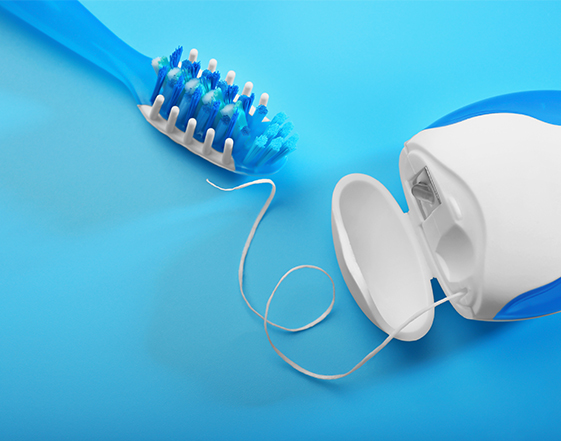Keeping our teeth clean is something we do daily. Two of the most effective tools we use to help achieve this are a toothbrush and floss. Fortunately, these have a low cost and are affordable. Although we all brush our teeth, most people do not bother or forget to floss. So, how important are toothbrushes and floss for our oral health? and why? We will talk about the top reasons so that you know why it is so critical. So, let’s dive right in.
Prevents tooth decay
Plaque is a sticky coating of bacteria that constantly builds on your teeth. When you consume sugary, acidic, or starchy foods, the bacteria turn the sugar into acid. This reaction is called an acid attack. So, what does this mean? Well, the acids dissolve the enamel, the protective layer that coats the surface of your teeth. Over time, frequent acid attacks can lead to cavities or holes forming in the teeth. Unfortunately, this damage is irreversible. The most effective way to prevent this is to brush or floss your teeth after eating. Brushing removes plaque and food particles from the surface of your teeth. Flossing removes plaque and food debris between the teeth that the toothbrush cannot reach.
Prevent gum inflammation and disease
Brushing and flossing your teeth helps prevent gingivitis. Gingivitis is an inflammation in the gums caused by plaque building up. If you do not clean the plaque, it can harden into tartar and form on the gumline. Over time, this irritates the gums, causing inflammation and bleeding. Brushing and flossing your teeth also helps prevent periodontitis, a severe gum disease. It causes the inner layer of the gum and bone to pull away from the teeth, forming pockets. Plaque can form in these small spaces, gradually spreading below the gum line. The toxins released by plaque destroy the bone and connective tissue that holds the teeth in place. Over time, it damages the gums tissue and bone, causing tooth loss.
Freshens breath
Bad breath is more common than most of us realize. Consuming strong-smelling or spicy foods can lead to bad breath or halitosis. Other causes of bad breath include poor oral hygiene, smoking, a dry mouth, or other health conditions. After a meal, food debris can get stuck in between the teeth. If you do not remove it, it can cause the build-up of bacteria, which release odoriferous gases. The gases cause an unpleasant odor to develop in your mouth. Dental floss is crucial because it loosens and removes any debris wedged in between your teeth. When you floss, it also stimulates blood flow to the gums. It helps to fight bacteria in and under the gums.
Minimizes many health conditions
If the harmful bacteria in your mouth reaches your bloodstream, it can increase the risk of having a stroke or heart attack. Therefore, brushing your teeth helps keep your mouth clean and reduces the risk of heart problems. Maintaining good dental health also reduces the risk of developing dementia and diabetes.
Saves you money
If you don’t look after your teeth, you are more likely to have dental problems in the future. Consequently, you will have to have more dental work, leading to higher dental bills. By brushing and flossing your teeth regularly, you are less likely to develop dental problems. Remember, prevention is better and cheaper than cure!
Brush and floss correctly!
When you brush and floss your teeth, you must use the correct techniques. Poor brushing and flossing can cause tooth decay, gum disease, bad breath, and other health problems. To brush your teeth:
Lubricate the toothbrush with a bit of water. Add a pea-sized amount of toothbrush to the bristles. Place your brush at a 45-degree angle to your front teeth. Gently move your brush back and forth in short circular strokes. Make sure to brush the back molars and upper areas of our chewing surfaces. Turn the brush upside down and clean the inside surface of your bottom front teeth. Brush your tongue to remove any bacteria present. Spit everything out and rinse your mouth with cold water.
For standard floss, break off 18 to 24 inches of dental floss. Hold the floss tightly between your thumbs and forefingers. Position the floss between two teeth. Gently move the floss up and down, rubbing it against both sides of each tooth. Avoid gliding the floss into your gums. When the floss reaches your gums, curve it into a C shape. Repeat the steps for each tooth.
Recommendations
The American Dental Association (ADA) recommends brushing your teeth twice a day for two minutes. Brush your teeth in the morning and before sleeping so the bacteria cannot feed on any food particles left in your mouth. Choosing the right toothbrush is very important. It is more comfortable and safer to use a toothbrush with soft bristles. Hard bristled brushes can damage the tooth enamel, causing bleeding and discomfort. A toothbrush with a smaller head also makes cleaning your teeth easier as it can reach the smaller spaces. Replace your toothbrush every 3 to 4 months or when you notice the bristles wear out.
Dentists recommend flossing at least once a day. It is better to floss before brushing your teeth. Why? Its because flossing dislodges the plaque and debris between the teeth. The brushing movement then aids in removing and washing it away. Avoid being aggressive when you floss. It can damage your gums, causing bleeding. Instead, put it firmly between the teeth and gently scrape the sides.
If you are new to flossing, you may bleed a little. But don’t worry, it’s perfectly normal. However, if you still experience bleeding after a few days, see your dentist check if you are using it correctly. If you are still finding any difficulty, the dentist may suggest other tools to clean your teeth.
Visit the dentist every six months for regular checkups.
